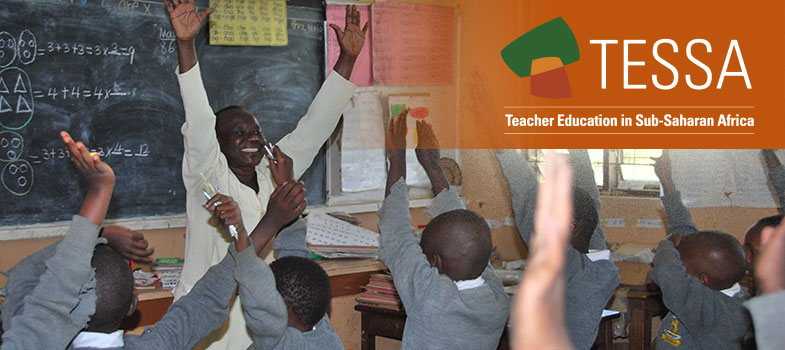3. Working in groups on book design
Communication is not just about words. Today’s newspapers carry far more photographs than in the past and modern textbooks include many more illustrations than older ones. Advertisers use images on billboards, in magazines and on television to sell products. Computer screens combine words and images in exciting ways. Pupils need to be able to create and read texts that combine the verbal (words) and the visual (pictures). As the teacher, your responsibilities include:
- keeping up to date with what interests pupils;
- including design activities (for example, designing grocery packages, posters, advertisements) in language and literacy lessons.
This part focuses on designing a cover for the pupils’ books of stories, poems, songs and games.
Case Study 3: Discussing and designing book covers
Mr Turkson encourages his Class 6 English pupils to ask questions in their reading lessons about words and expressions that they hear or read but don’t understand. One morning, a pupil told the class he had heard one character in a TV drama say to another, ‘Don’t judge a book by its cover.’ Mr Turkson asked his pupils for ideas about what this expression means and why it might have been used in the drama. After a few minutes of discussion, pupils understood that the design of a book cover may or may not give a good idea of what a book will be about. In a similar way, how a person looks or what he or she says may not be a reliable guide to what that person is like ‘on the inside’.
Mr Turkson decided to take the discussion further. He asked the class to think about the purpose of book covers and then to look at the cover of a storybook he had brought in. Can they tell from the cover what the story is about? What did they like or not like about the cover? Could it be improved and if so, how? After a lively discussion and reading the story to the pupils, he asked them to work in groups of four to make a new cover design for this book and gave them loose sheets of paper to work on. When they had finished, one pupil from each group explained to the class why they had chosen their design. Mr Turkson displayed the covers on the classroom wall.
Key Activity: Writing books, designing covers:
Having finished the writing and drawings for their storybooks, your pupils are now ready to design their book covers. You could use the backs of posters, cardboard boxes and other ‘throwaway’ materials, especially if resources are limited in your school. See Key Resource: Being a resourceful teacher in challenging conditionsfor further ideas.
- Show pupils some book covers and ask them what they think are good features (see Resource 4: Features of good cover design).
- Ask each group to design a cover for their book. They need to agree on the words, drawings and the position of each and decide who will write or draw each part of the cover.
- Move around the groups to discuss their designs with them and provide support and guidance as they make their book cover.
- Allow time for the groups to assemble their books.
- Ask one pupil from each group to display the book and encourage other groups to read it.
- Put the books into the class library.
What do you think your pupils learned from this activity?
Were the books read by other pupils once they were in the library?
- With young children, you could read the story or poems and ask them to draw a picture for the cover or inside.
2. Turning stories into books



